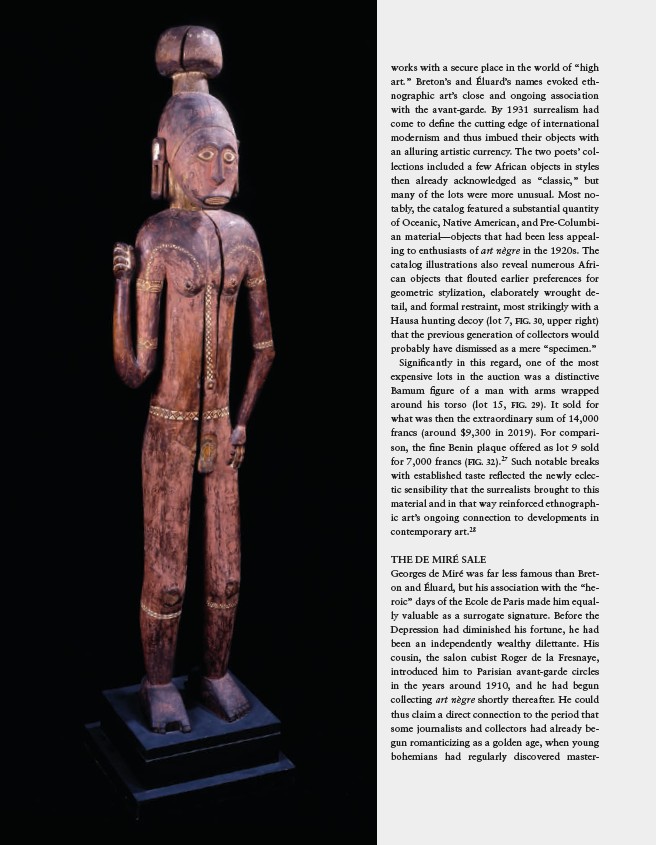
120
works with a secure place in the world of “high
art.” Breton’s and Éluard’s names evoked ethnographic
art’s close and ongoing association
with the avant-garde. By 1931 surrealism had
come to defi ne the cutting edge of international
modernism and thus imbued their objects with
an alluring artistic currency. The two poets’ collections
included a few African objects in styles
then already acknowledged as “classic,” but
many of the lots were more unusual. Most notably,
the catalog featured a substantial quantity
of Oceanic, Native American, and Pre-Columbian
material—objects that had been less appealing
to enthusiasts of art nègre in the 1920s. The
catalog illustrations also reveal numerous African
objects that fl outed earlier preferences for
geometric stylization, elaborately wrought detail,
and formal restraint, most strikingly with a
Hausa hunting decoy (lot 7, FIG. 30, upper right)
that the previous generation of collectors would
probably have dismissed as a mere “specimen.”
Signifi cantly in this regard, one of the most
expensive lots in the auction was a distinctive
Bamum fi gure of a man with arms wrapped
around his torso (lot 15, FIG. 29). It sold for
what was then the extraordinary sum of 14,000
francs (around $9,300 in 2019). For comparison,
the fi ne Benin plaque offered as lot 9 sold
for 7,000 francs (FIG. 32).27 Such notable breaks
with established taste refl ected the newly eclectic
sensibility that the surrealists brought to this
material and in that way reinforced ethnographic
art’s ongoing connection to developments in
contemporary art.28
THE DE MIRÉ SALE
Georges de Miré was far less famous than Breton
and Éluard, but his association with the “heroic”
days of the Ecole de Paris made him equally
valuable as a surrogate signature. Before the
Depression had diminished his fortune, he had
been an independently wealthy dilettante. His
cousin, the salon cubist Roger de la Fresnaye,
introduced him to Parisian avant-garde circles
in the years around 1910, and he had begun
collecting art nègre shortly thereafter. He could
thus claim a direct connection to the period that
some journalists and collectors had already begun
romanticizing as a golden age, when young
bohemians had regularly discovered master-